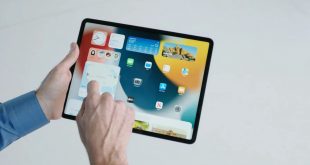Today we will talk about the present and the future of the telephony and data services, about the VoIP technology. As many companies are converging their data and voice network technologies to a single IP-based infrastructure, SIP trunking is an excellent replacement of their traditional voice service from their providers. A SIP trunking service connects their IP-based private branch exchanges (IP PBX) via simple IP connectivity instead of traditional telephone services.
The European VoIP market is growing strongly. Customers are moving to VoIP (Voice over IP) as part of their unified communication and collaboration strategy. Customers are integrating their data and voice network technologies to a single IP-based infrastructure. As a result the SIP trunking market is increasing fast, because more and more customers want to connect their IP-based private branch exchanges (IP PBX) via IP technology.
But let’s analyze together some of the VoIP fully-featured voice telephony service based on SIP trunking:
à Native voice transport over IP networks
Next-generation replacement of traditional Voice Line services means:
à Plain old telephony services are replaced by mature IP connectivity
High quality inbound and outbound calls available in multiple countries means:
à Including number porting and regulatory compliance
Flexible IP PBX policy to ensure inter-working with VoIP Access means:
à An IP PBX which is already certified by some top leaders of the market such as COLT ( e.g.) and a dedicated engineering support
àFull inbound and outbound service available in many countries including number porting of your geographic numbers or new numbers from telephony providers
àCarrier-class service with full regulatory compliance such as emergency calls, lawful interception and data retention;
àValue added services such as Online VoIP reporting or Disaster recovery;
àFraud management through traffic monitoring (unusual traffic patterns, high volumes to fraud destinations).
About the VoIP functionality, we need to clear some technical details:
VoIP protocols: SIP
Codecs: complying to bandwidth (compressed) or quality centric (HD)
FAX: T.38 support
Resilience: multiple trunks or PoP resilience
Security and encryption: TLS (signalling), SRTP (audio).
In conclusion, VoIP access will increase your business efficiency, if: you are looking for ways to simplify management of your national and international voice services and improve network utilization; you want to control or reduce voice services costs across your world wide locations through a fully-featured telephony service; you are planning to migrate from your separate traditional voice and data networks to a single converged IP infrastructure; you want your voice and data infrastructure to reflect disaster recovery and business continuity options; you want to lay the foundations for a future-proof solution that supports Unified Communications and Collaboration.
 Tech Gadget Central Latest Tech News and Reviews
Tech Gadget Central Latest Tech News and Reviews




